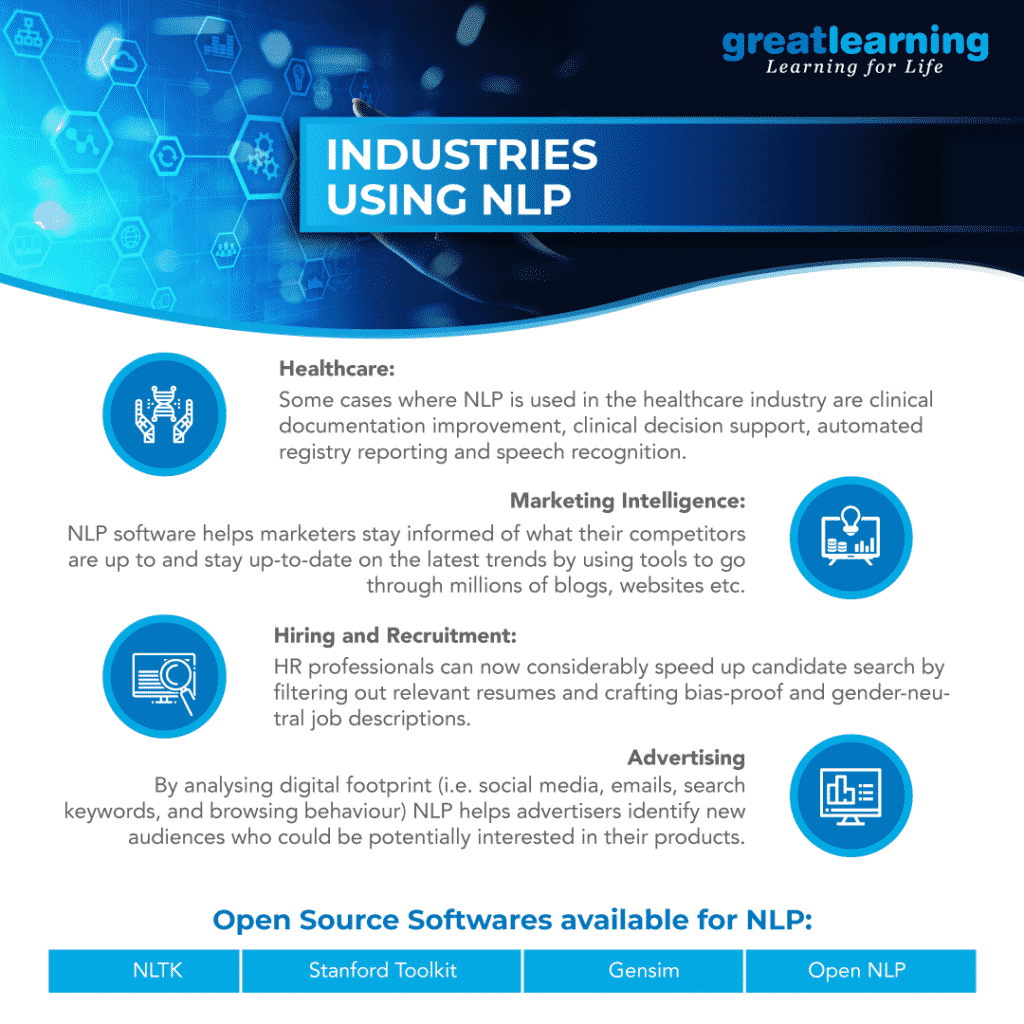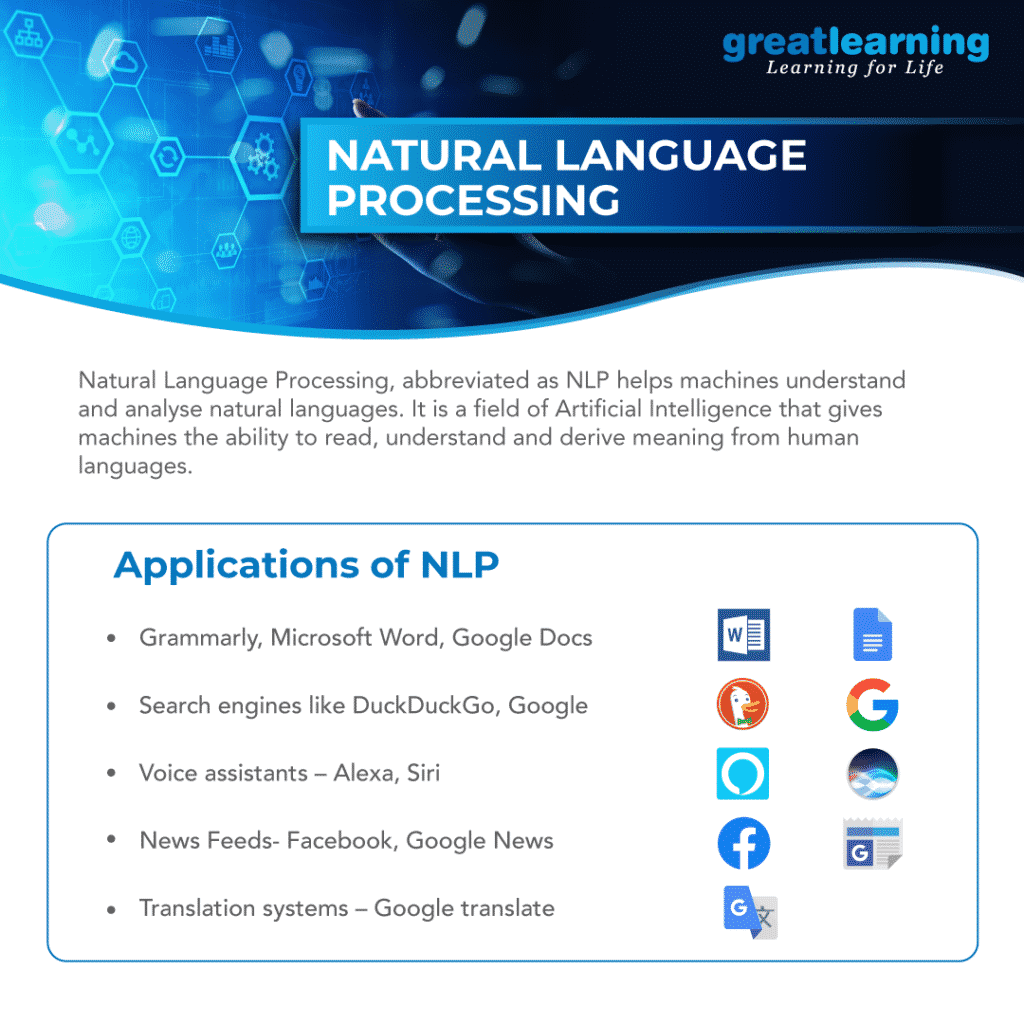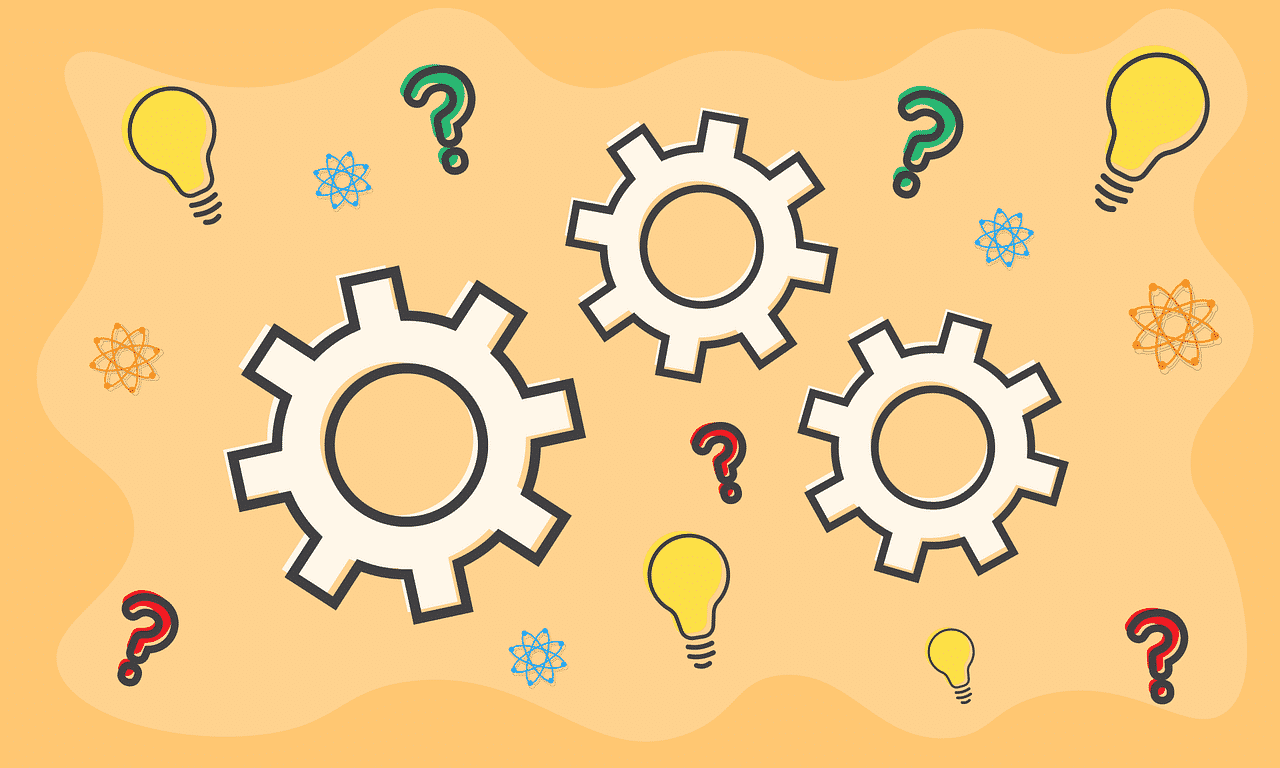Introduction
Introduction to Natural language processing: NLP is an exciting and upcoming field in Artificial Intelligence. NLP finds part in the portfolio of products for most of the companies working in the field of data sciences. NLP can be seen in action in all conversational voice assistants (Amazon Alexa, Apple Siri) to sentiment analysis (Hubspot’s customer feedback analysis feature, Amazon recommendation), language recognition and translation (Google Translate, IBM Watson), spelling correction (Grammarly), autocomplete (Google Gmail) etc.
Top NLP Projects
Find NLP application in the following systems
- Sentiment Analysis
- Text Classification
- Chatbots & Virtual Assistants
- Text Extraction
- Machine Translation
- Text Summarization
- Market Intelligence
- Auto-Correction of text
- Intent Classification
- Urgency Detection
- Speech Recognition
Before we discuss NLP project ideas, let us delve into NLP detection, which is defined as computational processing (pre-processing, transformation, manipulation etc.) of natural language by a software program. In common man's language, Natural language refers to the humans communicating with each other. NLP also means understanding complete human utterances and giving suitable responses to them.
Scientifically, Natural Language Processing or NLP can be defined as an interdisciplinary subject comprising of statistics, linguistics, Artificial Intelligence and computer programming that enables the computing machines to read, understand and derive meaning from human languages. NLP is increasingly adopted in our day to day life to solve real-world problems. Some of its applications are as follows:
NLP can assist doctors to recognize and predicting diseases based on electronic health records and patients’ speech. It is of less use for commonplace diseases but is of great help for life-threatening diseases such as cardiovascular diseases, various forms of cancer, mental disorders, renal disorders and schizophrenia. For example, Amazon Comprehend Medical is an NLP based service that finds out disease conditions, medications and treatment outcomes from patient notes, clinical trial reports and other electronic health records.
Organizations can determine customer trends and customer preferences and buying habits by identifying and extracting information from sources like social media and carrying out sentimental analysis. This sentiment analysis can help a marketer mine customers’ choices and their decision drivers.
Companies such as Google and Amazon have increasingly used NLP in their software and hardware products to enable them to provide personalised touch i.e. understand customer commands spoken in their home or native language, give custom curate greetings, understand common phrases, carry out personalized searches etc. E.g. IBM cognitive assistant software works like a personalized search engine by learning all about you and then reminds you of a name, a song, or anything you can’t remember the moment you need it to.
Companies have increasingly adopted NLP in their customer services by replacing a live representative with AI-powered automated chatbots. A chatbot learns everything about the product it is representing, all common problems or issues faced by the product's customers and common information sought. Chatbot also has NLP modules inbuilt to recognize natural language spoken by customers. It can then guide any customer who contracts with a problem, to a satisfactory resolution. This saves huge operational costs and each interaction add to the chat bot's training thereby making it more efficient.
Companies are increasingly using NLP-powered solutions to solve common nuances such as spam detection and fake news detection. Google's Gmail filter and classify your emails with NLP by analyzing text in emails that flow through their servers and tagging spam for you so that you do not have to waste your time on them. BBC, for instance, uses NLP powered system to determine if a news source is accurate or politically biased by calculating its trust score and then accepting it if it is above a threshold.
NLP has also made its way into corporate recruitment. NLP powered systems are used in both the search and selection phases of talent recruitment, identifying the skills of potential hires and cherry-picking prospects before they become active on the job market. On a different note, check out the NLP Customer Experience course.
NLP's star application is voice-based intelligence. Amazon’s Alexa and Apple’s Siri are examples of intelligent voice-driven interfaces that use NLP to detect and follow user commands as diverse as searching a nearby ATM to opening an AI-powered tube light in the house.
NLP is also paving its way in financial trading. NLP is being used to track news, reports, comments about possible mergers between companies, everything can be then incorporated into a trading algorithm to generate accurate share price.

Writing real-world NLP projects is simply the best way to hone one's NLP skills and transform theoretical knowledge into a valuable practical experience that could be showcased to the external world by a portfolio of projects. This will directly translate to professional advantage when you will apply for any NLP-related job. Your portfolio of projects will prove your “NLP proficiency” to the recruiter and help you edge out other candidates.
Some of the top NLP project ideas are as follows:
Sentiment analysis for the product: This type of project can greatly help a product manager to make strategic decisions related to the product under consideration. It will firmly place you as an NLP specialist because it has all components of an NLP theory. Here, you aim to find out how customers evaluate competitor products, i.e. what they like and dislike. Technically, Sentiment analysis is contextual mining of text which identifies and extracts subjective information in an input source to get meaningful insights on which business decisions can be made.
Predictive text analysis: autocorrect and auto corrective features are an increasing part of any word processing software. They either finish a word or throw suggestions based on previous learning and present context. Predictive text will customize itself to the regional and natively used language. You can create a project wherein the user can input text or a file and the NLP based code can correct errors. You can also provide a text box where the user can type and the code can read and predict the next word based on an ensemble of NLP techniques.
Moderation system: In this project, you need to moderate comments posted by users as normal or toxic. A toxic comment uses offensive, sexual, religiously hurting, cast or creed bashing words etc. This has practical significance since most of the public forums have this feature built-in. Here you have to use various NLP word processing as well as transfer learning techniques to detect toxic comments posted in the native language.
Language translators: This is the most used application of NLP and can showcase your proficiency in NLP. Most languages do not get translated word to word and have different orders for sentence structure which confuses any translation service. In this project, you have to use NLP to translate languages more accurately and present grammatically-correct results. Moreover, you can explore various NLP based tools to recognize the language based on inputted text and translate it thereafter.
Email filters: Spam detectors and email filters are the two most sought applications of NLP ever since NLP become available. So you can also create a project on a spam detector wherein you will read an email, use various properties and rules to predict if the given email is spam or not. You can auto-learn your model so that it can improve with more data.
Document Similarity scorer: In this project, you will create a project that will take as input a set of documents and be given a grid giving the similarity score of one document with the other. This finds practical application in websites such as Quora and Chegg.
Quora is a question and answer platform where people ask questions and people only provide answers to them. Thus, the entire content on the website is generated by users; serve to make people learn from each other’s experiences and knowledge. But such platforms have problems of duplicity. Since there is no check on question posted, it is often found to be nearly a duplicate of an existing question. So this project, will compare each question with other questions in its category and give a similarity score ranging from 0.0 (no duplicity at all) to 1.0 (complete duplicate). The business benefit for this project is that based on score, we can tag all similar questions with the original question and close them so that people focus on the only original question.
Text Summary creator: In this protection, you will take as input a long text and give as output a crafted summary about this text. Text summarization is one of the most interesting problems in NLP because it is very hard and time-consuming to manually extract the summary of a large document of text. In this project, you could use different traditional and advanced methods to implement automatic text summarization, and then compare the results of each method to conclude which is the best to use for your corpus.







